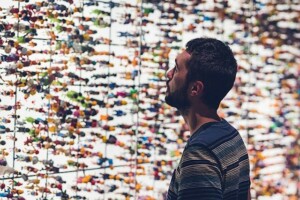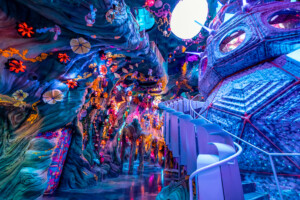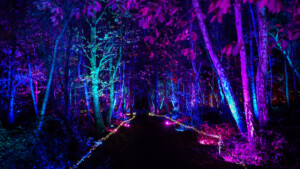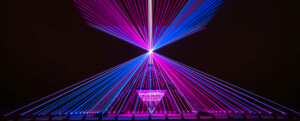 By Peter Ed
By Peter Ed
Related: Audiovisual technology: LEDs are the new Pixidust / Audiovisual technology: A short history of the videowall / Aspects of EXPO 2010 -an Audiovisual Review / Rise of the MBAs (Media Based Attractions) :The next generation of entertainment experiences / Making (Audiovisual) Waves at Disney
What was so great was escaping from those colour wash blobs that preceded the moving lights. Now we saw not only the musicians and amazingly constructed scenery, but also the whole stage space, and beyond, come alive in a wonderful 3D reality.
OK, the moving lights have not gone away, they are still one of the most exciting lighting tools available, but they were pushed off the top slot in the mid ‘noughties’ by nothing other than LEDs! As briefly mentioned in my previous blog, LEDs are the new Pixidust, it was supergroup U2 that started it off back in 1997 with the world tour of Popmart.
Think Big
Popmart’s designer Willie Williams and entertainment architect Mark Fisher relished the challenge of  how to deliver as big a visual impact as the big sound delivered by U2. ‘Let’s take a television screen’ they mused, ‘and make it much, much bigger!’ and then, ‘let’s keep the same number of pixels as a TV screen, just stretch them out!’ Revolutionary stuff! The first low resolution video screen was born, 50m wide and 15m high with over 100, 000 pixels, each with 8 LEDs. (Image right: That pixelated feel)
how to deliver as big a visual impact as the big sound delivered by U2. ‘Let’s take a television screen’ they mused, ‘and make it much, much bigger!’ and then, ‘let’s keep the same number of pixels as a TV screen, just stretch them out!’ Revolutionary stuff! The first low resolution video screen was born, 50m wide and 15m high with over 100, 000 pixels, each with 8 LEDs. (Image right: That pixelated feel)
In those far and distant days the technology was hugely challenging and eye-wateringly expensive, but gradually both complexity and price made low resolution video screens affordable to the merely rich. Early adopters of the new ‘visual language’ of low resolution video were big event production companies and television entertainment and game shows. Today, you will be hard pressed to see any entertainment without the now ubiquitous pixels all over the stage – as backdrops, in scenery, in the flooring, hanging over the audience.
Freedom!
The most creative designers revelled in the sheer joy of freeing a design away from both boringly rectangular video screens and the limited effects available from even the most sophisticated moving  lights. Now, any surface, any space could be totally transformed just by playing different videos. At one moment, the backdrop could be a psychedelic vision of colourful rotating cogs – the next it could be a beautiful, huge, flickering candle flame, the next a raging fire. And so on. (Image left: Big screen (or small musicians?))
lights. Now, any surface, any space could be totally transformed just by playing different videos. At one moment, the backdrop could be a psychedelic vision of colourful rotating cogs – the next it could be a beautiful, huge, flickering candle flame, the next a raging fire. And so on. (Image left: Big screen (or small musicians?))
Just as exciting and also challenging, was the very nature of the ‘pixelated’ look. Television designers fell in love with it very quickly. Suddenly flat scenery could take on its own personality, colour, texture and movement. So, as low resolution LED video technology matured and creative designers everywhere started to find new exciting uses, the necessary but separated technology of media storage, playback and manipulation also came of age. The marriage of the two technologies was definitely made in heaven, but the liaison is yet in its courtship years, and we expect and hope for new and interesting developments. More later!








